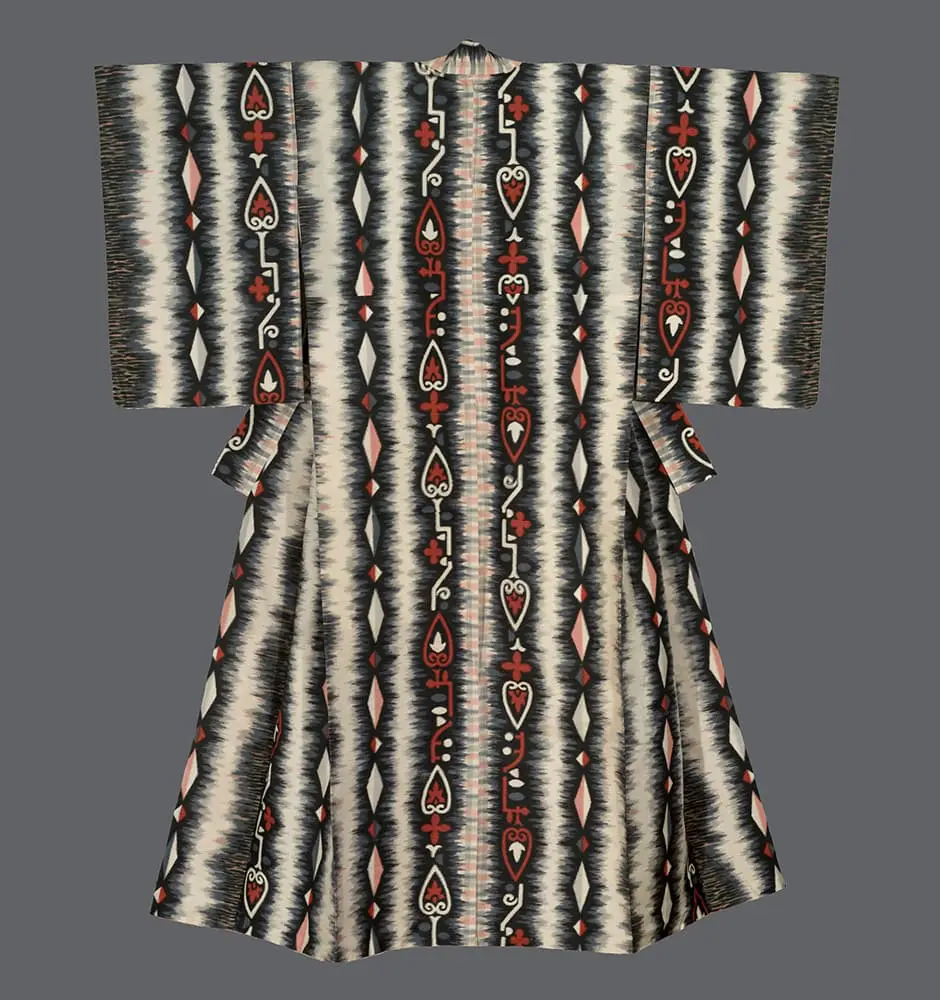This vibrant meisen silk kimono from the 1950s represents a fascinating example of cross-cultural design influence in post-war Japanese textiles, featuring motifs that appear distinctly reminiscent of Western playing card imagery rather than traditional Japanese patterns. The composition displays vertical stripes created through the characteristic meisen kasuri technique, with alternating bands of deep charcoal and cream that provide a rhythmic backdrop for the bold decorative elements. The most striking feature is the repeated motif of stylized hearts, spades, and diamond shapes in rich red and white, arranged in vertical chains that echo the suits found in European playing cards—a remarkable departure from conventional Japanese textile symbolism.
This design reflects the complex cultural exchanges occurring in 1950s Japan during the American occupation and subsequent rebuilding period, when Western influences began appearing in various forms of Japanese decorative arts. The meisen technique, popular for its ability to create sharp, graphic patterns through precise resist-dyeing of warp threads before weaving, was particularly well-suited to reproducing these geometric, card-like motifs with crisp definition. The alternating vertical stripes create a sense of movement and rhythm, while the playing card symbols add an element of playfulness and modernity that would have appealed to fashion-conscious wearers of the era. The detail images reveal the technical precision of the kasuri work, where the characteristic soft edges of the resist-dyed threads create subtle transitions between colors while maintaining the bold graphic impact of the overall design.
Measurements: 49 inches (124 cm) from sleeve-end to sleeve-end, standing at a height of 59 inches (150 cm).
.avif)








